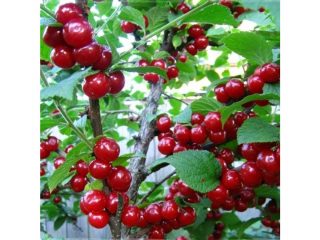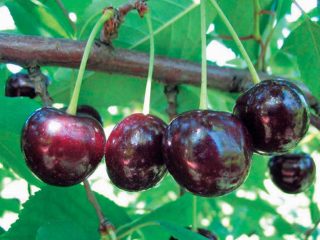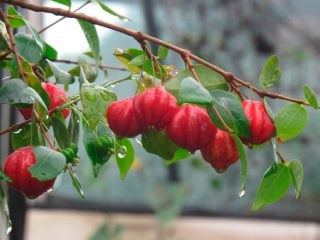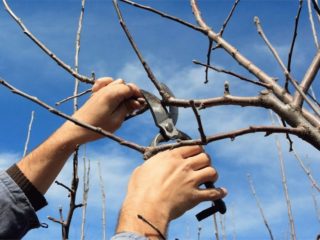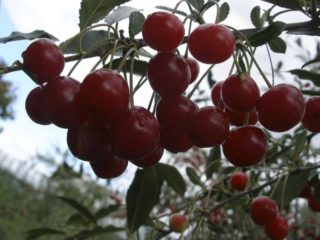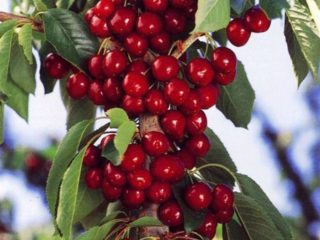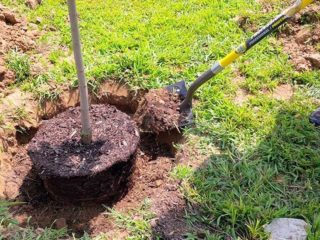Content
- 1 Is it possible to propagate cherries from cuttings?
- 2 Cherry varieties suitable for propagation by cuttings
- 3 Harvesting cuttings
- 4 How to grow cherries from cuttings
- 5 How to root a cherry branch at home
- 6 Planting cuttings in open ground
- 7 Rules for caring for cherry cuttings
- 8 Advice from experienced gardeners
- 9 Conclusion
Propagating cherries by cuttings in the summer is a procedure that allows you to increase the population of cherry trees in the garden without extra costs. Cherry responds well to cuttings; the main thing is to follow the basic rules for growing shoots.
Is it possible to propagate cherries from cuttings?
Cherry is a hardy and unpretentious crop that lends itself well to vegetative propagation. It is not recommended to grow new trees only from seeds, since in this case the varietal characteristics are lost.
But cherries respond very well to vegetative propagation. And the most popular method remains cuttings, which offer several advantages:
- ease of cultivation and care;
- preservation of variety characteristics;
- rapid growth and early fruiting of plants, already in the third year;
- high hardiness of cherries from cuttings.
An additional advantage of the method is the fact that reproduction can be carried out almost throughout the year.
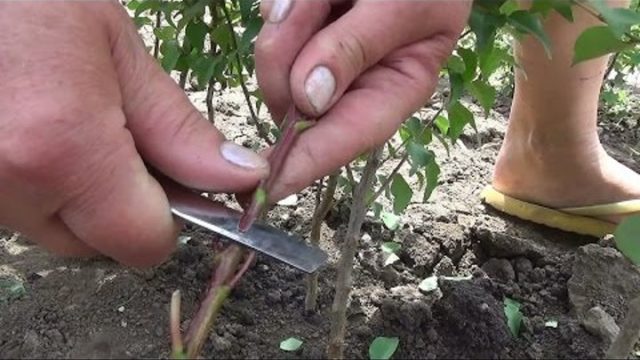
Cuttings are one of the most convenient ways to propagate fruit crops.
Cherry varieties suitable for propagation by cuttings
Cuttings are one of the simplest and most reliable ways to propagate cherry crops. However, not all varieties demonstrate equally high survival rates. Nadezhda Krupskaya, Shubinka, Vladimirskaya, Zakharovskaya, Rastunya are best suited for propagation by root and green shoots.
The survival rate of these varieties is about 80%, which practically guarantees the successful development of the shoot if the basic growing conditions are met.
Harvesting cuttings
For reproduction to be successful, it is necessary to prepare the material in a timely and correct manner. Cherry propagation is carried out not only with the help of green shoots, but also through root shoots.
How to propagate cherries using green cuttings
Young healthy shoots are best suited for propagation; they grow quickly and adapt well to new conditions. Cuttings are called green because they are cut from annual shoots, the apical part of which still retains a green color and continues to grow actively, and a brownish bark already appears in the lower part.
Green cuttings are harvested in late spring or summer in June. Shoots 9-12 cm long are cut from strong and healthy shoots; 3-4 buds should remain on each cutting. A straight cut should be located 5 mm below the bud, another cut, but at an oblique angle, is made above the upper bud.
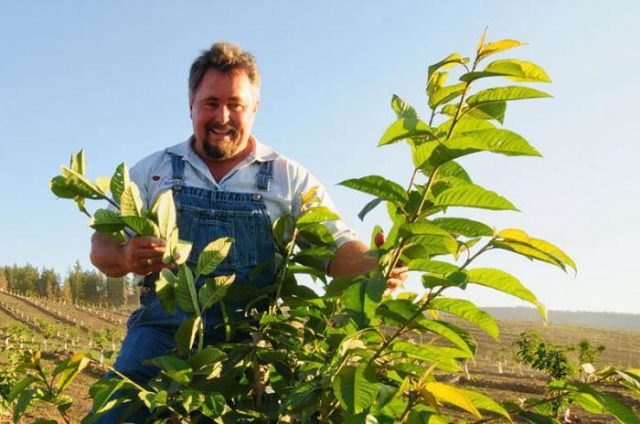
Green shoots are ideal for summer cuttings
It is recommended to root green branches immediately after harvesting, after shortening the leaves by a third. But if this is not possible, you can properly moisten the shoots with a spray bottle and wrap them in a plastic bag for short-term storage.
How to propagate cherries using root cuttings
Another option for propagating the crop suggests using root cuttings. Such shoots are sections of a long healthy root 12-15 cm long with the presence of a growth bud.
The advantage of root cuttings is that they actually represent a ready-made root system; all that remains is to grow a central shoot from it. But the planting material also has a drawback: to cut cuttings, you need to carefully dig out the surface roots of the cherry and at the same time try not to damage the plant.
How to grow cherries from cuttings
It is recommended to propagate cherries by cuttings in the summer; this period is considered optimal. At the same time, you can successfully root shoots both in spring and autumn, although you will have to put in a little more effort.
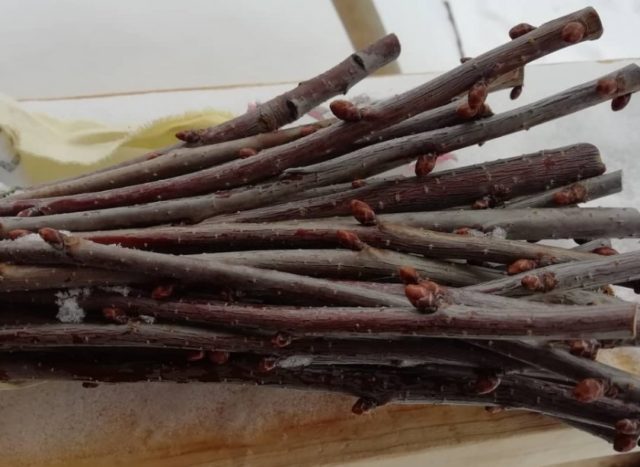
You can grow a cherry tree from a shoot all year round.
How to propagate cherries by cuttings in spring
For spring propagation, root shoots are best suited, although sometimes healthy ground shoots are used as planting material. Planting material should be prepared immediately after the snow melts - before the sap begins to flow, while the cherry tree is still in a dormant state.
The cuttings are not planted in the ground during this period. In early spring, seedlings with a developed root system can be rooted in the garden, but the cuttings first need to grow roots. Therefore, for the first time, the shoot is planted in a closed container at room conditions and covered with a tall jar or film on top.
Once new green leaves appear on the branch, it can be moved to a temporary bed in the garden. This should be done only when the soil has warmed up properly and return frosts have passed. You also need to remember that cuttings germinated indoors are hardened off before being taken out into the open air, placed outside first for half an hour, and then the duration gradually increases.
How to grow cherries from cuttings in summer
Summer is considered the best time to propagate cherries from green cuttings. In warm weather, you can root a cherry branch directly in the ground, bypassing home germination, and after 1-2 seasons, transfer the small seedling to a permanent place:
- Before cutting cuttings, the cherry tree is watered thoroughly so that its tissues are saturated with moisture.
- After a couple of days, several cuttings about 12 cm in length are cut from a young shoot with a green tip and placed in clean water for 2 hours.
- After this, the lower sections are treated with special root stimulants, for example, Kornevin, and planted on a temporary bed.
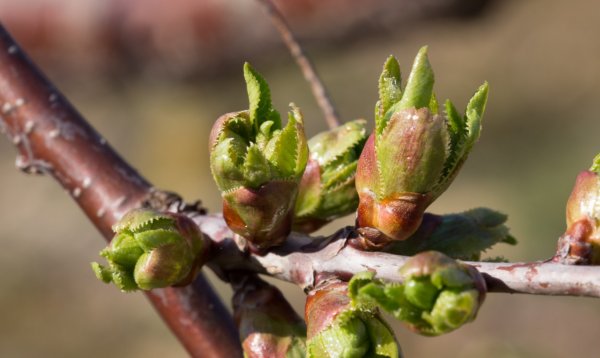
In summer, fruit crops can be propagated by cuttings directly in the ground.
The soil for the cutting must be nutritious; the soil on the site must be mixed with humus in equal parts, nitrogen fertilizer, superphosphate and ash must be added.Immediately after digging into the bed, the cuttings are watered abundantly and covered with a jar or plastic wrap to create high humidity.
How to root a cherry tree with cuttings in the fall
The beginning of autumn from September to mid-October is good for harvesting green and root cuttings. However, shoots intended for propagation are no longer planted in the ground in the autumn. For such a procedure, the plant needs a developed root system, but the cutting does not yet have one, and before the onset of frost it will not have time to grow roots and take root properly in the soil.
Branches harvested in the fall are most often placed in small boxes filled with wet sand and stored in a cool cellar. You can also simply bury the box shallowly on the site, and plant shoots as soon as the weather warms up.
Another option suggests rooting cherry cuttings in water and propagating the plant at home in the same autumn. However, the biological cycle of the crop may be affected, so spring or summer planting is preferable.
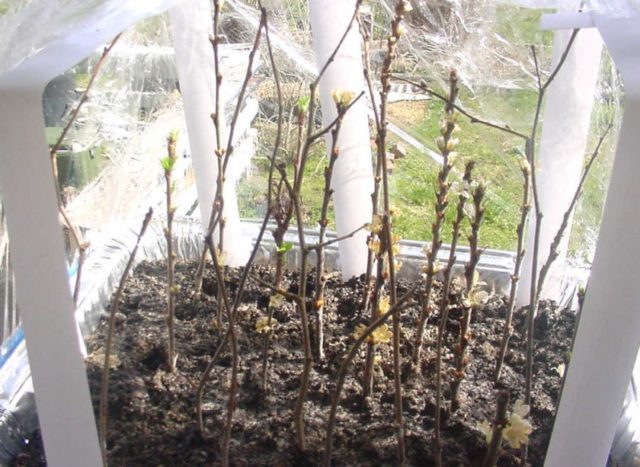
When harvesting shoots in the fall, they need to be saved until spring or rooted at home.
How to root a cherry branch at home
If cherry propagation is planned for early spring or autumn, then the only option is to sprout a branch at home. The home growing algorithm is quite simple:
- First of all, you need to prepare a pot or container for the plant if you plan to plant several cuttings at once.
- The container is filled with nutritious soil, consisting of turf soil mixed with humus, and a complex mineral fertilizer is added - superphosphate, nitrogenous fertilizers, ash.
- The soil is properly moistened, and then the cutting is buried vertically to a depth of about 3 cm. The distance between individual shoots should be about 10 cm.
Immediately after planting, the shoots are covered with polyethylene to create a greenhouse effect and grow cherries from a twig, and placed in a warm place. From time to time the shoots need to be watered and ventilated. With proper care, it will take about 2 weeks for roots to appear, and the same amount of time will be needed for the shoots to take root properly.
After this, the containers with the cuttings can be placed in a lighted place and you can continue to care for them until the end of spring, watering and feeding them once every 2 weeks. The film can be removed from the shoots after the roots appear.

Cuttings can be carried out indoors in a container
Planting cuttings in open ground
If the cuttings were germinated at home, then they are transplanted into the garden in May or early June, after the soil has fully warmed up. 2 weeks before transplantation, they begin to harden the cuttings, take them outside from the house, first for half an hour, then for several hours, and then for a full day.
Before planting, the soil in the temporary area is mixed with humus and complex fertilizers are added. The depth of the hole for planting material should be about 30 cm. For the first time, the shoot can be covered again with polyethylene so that it quickly gets used to the new place.
Summer green branches can be planted in the garden right away, without wasting time on home cultivation. This is also done no later than mid-June, so that the shoot takes strong roots before autumn.
Advice: if the branch develops well and quickly, then in the fall in October it can be moved to a permanent site and planted before winter. But usually, propagation by cuttings assumes that for 1-2 years the cherry will grow in a temporary place until it becomes completely stronger.
Rules for caring for cherry cuttings
Propagation by cuttings is popular because it does not pose any particular difficulties for the gardener. But any video on how to propagate cherries by cuttings will recommend following a few simple procedures when growing the crop:
- Watering. Cherry is a fairly drought-resistant plant, but young cuttings need increased amounts of moisture. Therefore, the soil in a closed container or temporary garden area should always be slightly moist. At the same time, it is important to avoid waterlogging; if the water begins to stagnate, the roots of the cutting may rot.
- Feeding. For rapid propagation, cherry tree cuttings need to be fertilized regularly, preferably once every 2 weeks. Standard fertilizers are used - urea, superphosphate, potassium salt, ammonium nitrate. Nitrogen is especially important for growing shoots, which promotes the rapid appearance of fresh green shoots and leaves. Fertilizers are applied in small quantities to the soil along with watering, and the ground part of the branch can also be sprayed.
- Protection from drafts. For the first month of germination, it is customary to cover the cuttings with plastic wrap or a glass jar if we are talking about one shoot.A transparent shelter helps maintain a stable microclimate - drafts and sudden temperature changes are dangerous for young shoots. But at the same time, the cover must be removed briefly every day so that the plant receives oxygen.

Grown shoots require full care
If a shoot planted on a plot has to spend the winter in the open air before being transplanted to a permanent place, you need to take care of high-quality insulation. It is customary not only to mulch low cherry plants for the winter with a dense layer of peat or sawdust, but also to cover them with spruce branches, vegetable tops or other materials. Although most cherry varieties can easily tolerate frost, young plants may suffer from the cold.
Advice from experienced gardeners
Experienced gardeners know several secrets that increase the chances of successful propagation of cherries by cuttings:
- If propagation is carried out by green shoots, then 2 weeks before harvesting the material you need to select a specific branch and mark the cut point on it. In this place, the shoot should be wrapped in an opaque material, for example, with black electrical tape - 4 cm wide. Since the closed area of the bark will no longer receive sunlight, the cells in this place will degenerate, and after burying in the ground, the cutting will give roots faster. According to gardeners, this method increases the likelihood of rooting by 30%.
- Shortly before cutting the planting material, it is recommended to water the cherries generously with water. The more the tree shoots are saturated with moisture and nutrients, the faster the cuttings will begin to grow.
- Despite the fact that even mature cherry trees produce strong root shoots and green shoots, it is better to use young plants for propagation - the planting material taken from them takes root better.
Gardeners recommend remembering that for successful propagation, cuttings must be cut accurately, neatly and evenly with a well-sharpened blade. The garden knife should first be sterilized in a solution of potassium permanganate.
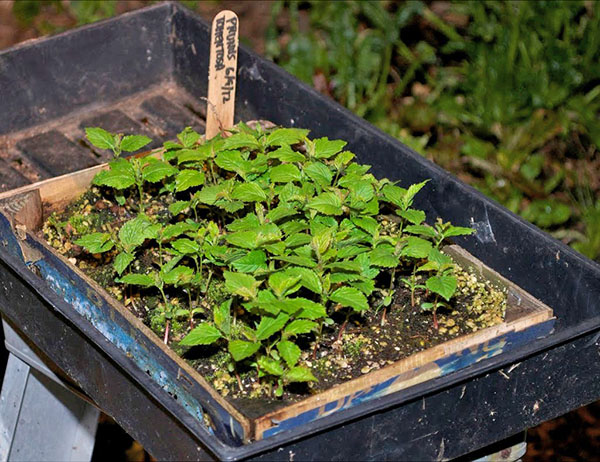
It is better to take planting material from young plants
Conclusion
Propagating cherries by cuttings in the summer allows you to root a cherry tree shoot quickly and without hassle. Propagation can also be carried out in early spring or autumn, although in this case the cuttings will first have to be germinated at home at room temperature.
